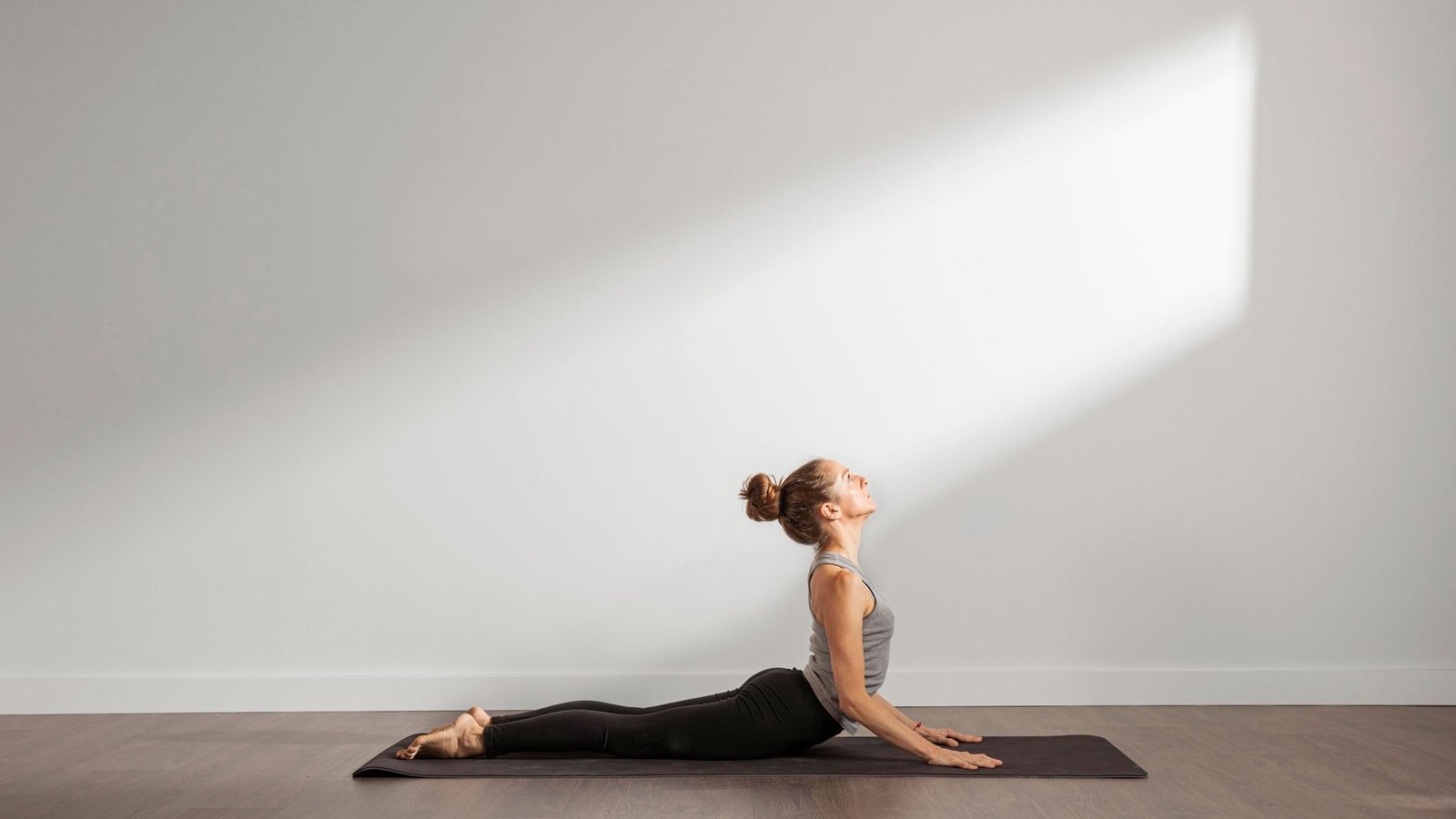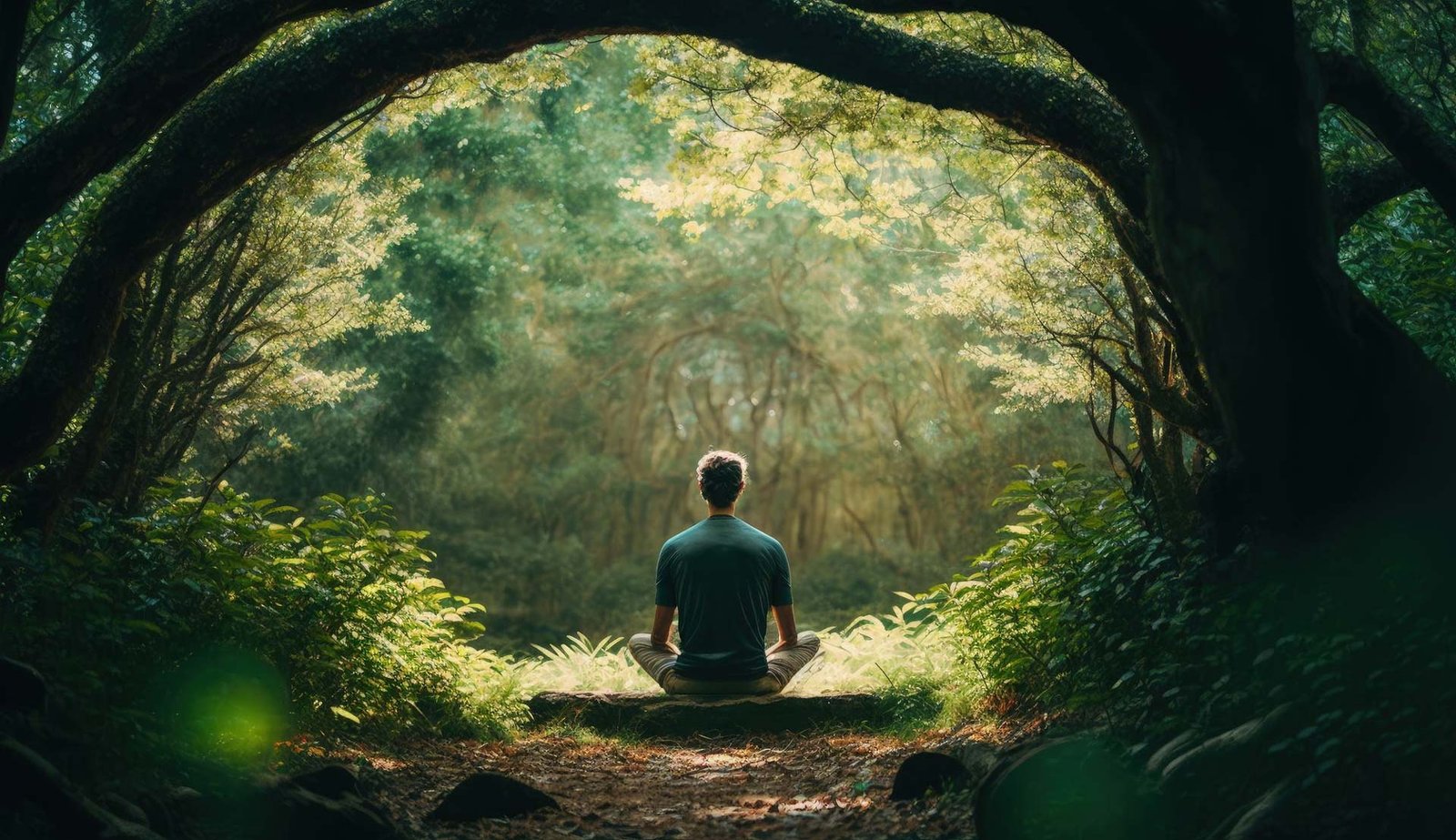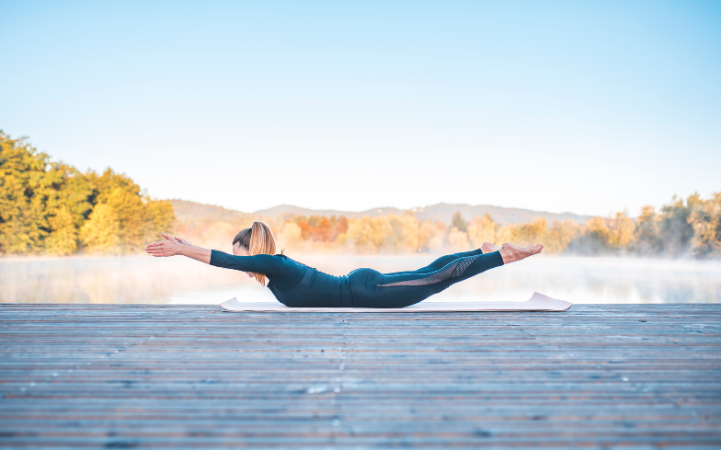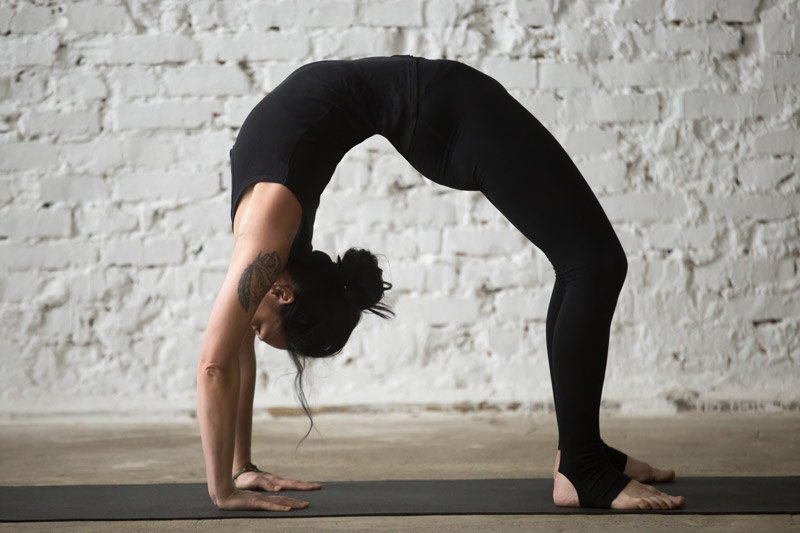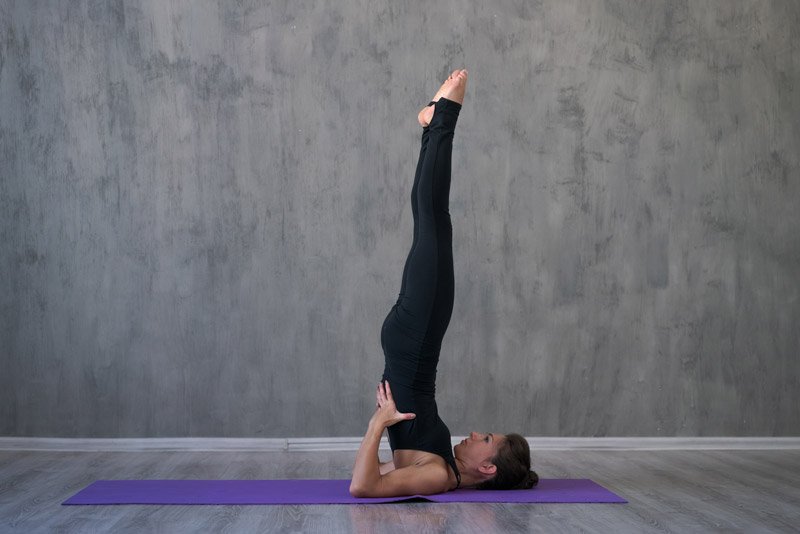Bhujangasana, or Cobra Pose, is a rejuvenating backbend commonly practiced in Hatha Yoga and as part of the Sun Salutation (Surya Namaskar) sequence. The name is derived from the Sanskrit words Bhujanga (serpent or cobra) and Asana (pose), reflecting the posture’s resemblance to a serpent raising its hood. This asana energizes the body, enhances spinal flexibility, and stimulates internal organs. Regular practice can improve posture, relieve back pain, and invigorate the mind and body.
Steps to Perform Bhujangasana
Starting Position: Lie flat on your stomach on a yoga mat, with your legs extended, feet together, and toes pointing outward.
Place the Hands: Position your palms on the floor directly under your shoulders, keeping your elbows close to your body.
Engage the Lower Body: Press the tops of your feet, thighs, and pelvis into the ground. Engage the thigh muscles without tightening the buttocks excessively.
Inhale and Lift: On an inhalation, begin lifting your head and chest off the floor by gently straightening the arms. Only go as high as is comfortable.
Open the Chest: Broaden the collarbones, pull the shoulders back and down, and open the chest. Your elbows can remain slightly bent if needed.
Gaze Forward or Upward: Look straight ahead or slightly upward without compressing the neck.
Hold the Pose: Stay in Bhujangasana for 15 to 30 seconds while breathing deeply.
Release the Pose: On an exhale, slowly lower your chest and forehead back to the mat.
Benefits of Bhujangasana
Strengthens the Spine: Improves flexibility and strengthens the muscles around the spine.
Stretches Chest and Lungs: Expands the chest and improves breathing capacity, benefiting the respiratory system.
Stimulates Abdominal Organs: Gently massages internal organs, aiding digestion and elimination.
Improves Posture: Counteracts the effects of prolonged sitting and slouching by promoting spinal extension.
Alleviates Stress and Fatigue: Opens the heart space and energizes the body, combating depression and fatigue.
Therapeutic for Asthma: By opening the chest and improving lung function, it can help individuals with mild respiratory conditions.
Tips for Practicing Bhujangasana
Warm Up First: Engage in gentle stretches or a few rounds of Surya Namaskar to prepare the spine.
Avoid Overextension: Don’t force the backbend. Start with a low lift and increase gradually with regular practice.
Use Support if Needed: Beginners can use yoga blocks under their hands or keep the elbows bent for more control.
Engage Core Muscles: Slightly activate the abdominal muscles to support the lower back and maintain stability.
Keep Elbows Close: Ensure elbows remain close to the body to prevent strain on the shoulders and wrists.
Cautions and Contraindications
Pregnancy: Avoid this pose during pregnancy, as it puts pressure on the abdomen.
Back Injuries: Those with herniated discs or chronic back pain should consult a healthcare provider or experienced yoga teacher before attempting.
Carpal Tunnel Syndrome: Individuals with wrist issues should modify or avoid the pose.
Recent Abdominal Surgery: Refrain from practicing this asana if recovering from abdominal surgery.
Peptic Ulcers or Hernia: People with stomach ulcers or hernia should avoid deep backbends like Bhujangasana.
Bhujangasana is a deeply revitalizing yoga pose that strengthens the spine, stretches the chest and lungs, and awakens inner vitality. It is accessible for most practitioners and can be safely modified to suit different levels of experience. By incorporating Bhujangasana into your regular yoga routine, you can build resilience in your back, increase your lung capacity, and boost overall energy levels. As always, listen to your body, practice mindfully, and avoid pushing beyond your current flexibility or strength to ensure a safe and beneficial experience.


